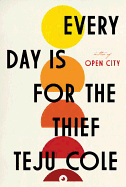
| Publisher: | Random House | |
| Genre: | General, Fiction, Cultural Heritage, Literary, African American | |
| ISBN: | 9780812995787 | |
| Pub Date: | March 2014 | |
| Price: | $23 |
| Starred | Fiction |
by Teju Cole
Writing in his deeply meditative and personal voice, Teju Cole suspends Every Day Is for the Thief, his second novel, between infatuation and contempt. Many years after his emigration to the United States, the narrator returns to Lagos, Nigeria. What he discovers there shatters any remaining nostalgic ache he has held for that place, transforming his relationship to the notion of home.
Much like Open City, Cole's debut, Every Day Is for the Thief meanders through streets, erecting a labyrinthine overlay to the city, mapping out its history, culture, secrets and assets. But if his first novel was a profound meditation on cities as cultural structures, Every Day expertly considers money as a social construct, how corruption breeds corruption until all that remains is complacency. Financial prosperity is on every mind and behind every pulpit, while extortion greases the all-too-ubiquitous conniving palm. Surety transfers as unexpectedly, and often with as much threat of violence, as a bout with malaria.
Cole's fiction is a magnificent vehicle, employed to examine systemic corrosion as well as subtle relational shifts. His narrator negotiates gratuities with the same contemplative reserve he offers the friends and family he left in Lagos. In this worthy second novel, it's complicated to be an expatriate. Home, after all, carries with it a peculiar exchange rate. --Dave Wheeler, publishing assistant, Shelf Awareness.
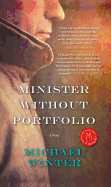
| Publisher: | Pintail | |
| Genre: | General, Fiction | |
| ISBN: | 9780143187813 | |
| Pub Date: | February 2014 | |
| Price: | $16 |
| Fiction |
by Michael Winter
Michael Winter's Minister Without Portfolio is a heart-tugging novel about one man's attempt to reinvent himself and reconnect with a community after a tragedy in which he is complicit. Henry Hayward is called the minister without portfolio by his good friend Tender Morris because he's "not committed to anything but he's got his hand in everything." When Tender dies in a roadside bombing in Afghanistan trying to protect Henry, the nickname haunts him into action. Returning to Newfoundland, Henry begins a tentative courtship with Tender's pregnant girlfriend, Martha Groves, and attempts to establish himself as a giving and needed member of the community.
Winter captures the icy and vast beauty of Newfoundland and the effort needed to make lasting human connections amid its isolation. He delineates the fumbling vulnerability of Martha and Henry as they try to build a relationship out of the ashes. In Henry, Hayward has created that rare literary figure, a genuinely decent man whose mistakes are rooted in a reluctance to hurt others rather than overt ill will. While every scene sings and the characters and settings are evocative and easy to disappear into, Winter also has an understated wisdom to his worldview.
Minister Without Portfolio is an effortless read, enjoyable for pure pleasure but also a lasting statement of how we build relationships in this world, of the small, brave gestures of the heart that bring healing after time. --Donald Powell, freelance writer
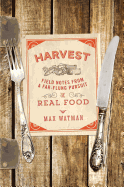
| Publisher: | Norton | |
| Genre: | Health & Healing, General, Cooking, Essays & Narratives | |
| ISBN: | 9780393063028 | |
| Pub Date: | March 2014 | |
| Price: | $24.95 |
| Starred | Biography & Memoir |
by Max Watman
"I called my steer Bubbles," begins Max Watman's memoir, Harvest, as he recounts his attempt to "live as if I were on a farm but without the farm," producing his own food from spring to Thanksgiving. He ends with this observation: "Throughout my attempts at deep foodie DIY production, I have at times overdone it, gone too far, and ended up in the wilds or the weeds... slightly lost or overcome." What occurs in between is usually hilarious, often thoughtful and strangely compelling.
Each chapter follows a lovely narrative arc, whether Watman (Chasing the White Dog: An Amateur Outlaw's Adventures in Moonshine; Race Day) is writing about the purchase of a steer that must be housed and fed before it is eventually turned into food, the vulnerabilities of chickens ("Insects can beat a chicken in a fair fight if they get themselves organized") or the excitement of smuggling raw milk cheese out of France. Watman's writing is intimate--with entertaining asides to his wife and his readers throughout--making the reader feel like a close friend roped into another of Max's crazy culinary adventures. He shares his unfounded insecurities along with his dubious successes, expertly weaving his culinary influences from childhood to the present into the narrative. In the closing scenes at the Thanksgiving table, brimming with the bounty of his yearlong culinary experiment, the reader is a part of the scene, relishing the "braised short rib of Bubbles" and other delectable delights from the harvest, sad the journey must end. --Kristen Galles from Book Club Classics
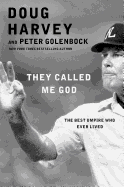
| Publisher: | Gallery | |
| Genre: | General, Sports & Recreation, Biography & Autobiography, Baseball | |
| ISBN: | 9781476748788 | |
| Pub Date: | March 2014 | |
| Price: | $27 |
| Biography & Memoir |
by Peter Golenbock, Doug Harvey
Doug Harvey knew from age six that he was going to follow in his father's footsteps and become a baseball umpire. In They Called Me God, Harvey tells the story of how determination and hard work made that dream a reality. Harvey is unabashed in articulating his strengths--and his weaknesses. Challenges marked his ascent as he faced a failed first marriage and messy divorce, trouble paying the bills, naysayers and the often lonely, barren existence of umpiring on the road. By studying and memorizing the rule book to understand the game inside and out, Harvey--and serendipity--ultimately launched his career to the National League in just four years... without ever going to umpire school.
A later-in-life throat cancer diagnosis (from chewing tobacco) provided the impetus to share this no-holds-barred, straightforwardly told story, co-written with veteran sports author Peter Golenbock (Bums; Presumed Guilty). Harvey gets and gives a lot of advice and bares all about life behind the plate--tricks of the trade, his experiences with cheaters, pranks, controversial calls and rude fans. He also shares short, memorable anecdotes about working alongside some of the "greatest players ever," among them Sandy Koufax, Joe DiMaggio, Ted Williams, Nolan Ryan, Willie Mays, Hank Aaron, Gaylord Perry and Pete Rose.
For the 31 years and 4,673 games of Harvey's umpiring career, he never compromised his integrity, earning him a place in the National Baseball Hall of Fame and the respect of peers and fans. --Kathleen Gerard, blogger at Reading Between the Lines
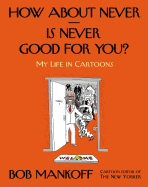
| Publisher: | Holt | |
| Genre: | General, Biography & Autobiography, Comics & Graphic Novels, Editors, Journalists, Publishers | |
| ISBN: | 9780805095906 | |
| Pub Date: | March 2014 | |
| Price: | $32.50 |
| Biography & Memoir |
by Bob Mankoff
You may be familiar with the New Yorker cartoon caption from which Bob Mankoff's memoir, How About Never? Is Never Good for You?, gets its title. Mankoff, the magazine's cartoon editor since 1997, delivers a witty behind-the-scenes look at contemporary American media's most prominent home for great cartooning.
Mankoff's current post didn't exactly fall into his lap. It took him 2,000 submissions until he landed his first acceptance in 1977, and it was another three years before then-editor Lee Lorenz recognized the "original and distinctive style" in Mankoff's painstakingly stippled drawings and suggested he be offered a contract. (He's published 900 cartoons since that first.)
The real fun of this book lies in the way Mankoff lifts the curtain to reveal the inner workings of the process that winnows some 1,000 cartoons submitted each week down to the roughly 17 that appear in each issue. In one chapter, Mankof claims proudly that getting a cartoon into the New Yorker "is the equivalent of getting signed by the Yankees as a baseball player." The magazine's popular caption contest is the subject of another chapter, with helpful tips for aspiring contestants: "verbalize, conceptualize, topicalize, socialize and fantasize."
Mankoff observes that New Yorker cartoons specialize in "benign humor, intended to intrigue or amuse but not to offend." He presides over a group of talented artists and humorists who have mastered the tricky art of amusing the magazine's readers week in and week out and, if Mankoff has anything to say about it, will do so for years to come. --Harvey Freedenberg, attorney and freelance reviewer
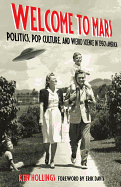
| Publisher: | North Atlantic Books | |
| Genre: | United States, General, History, Social Science, 20th Century, Popular Culture | |
| ISBN: | 9781583947616 | |
| Pub Date: | March 2014 | |
| Price: | $12.95 |
| History |
by Ken Hollings
In Welcome to Mars, Ken Hollings details how Cold War politics, altered states of consciousness, extraterrestrial beings, postwar optimism and imagination came together in a strange maelstrom during the 1950s, foreshadowing many of the technological advances that would feed future research and innovation.
Hollings begins his examination in the late '40s with the introduction of the suburbs, as the U.S. government's investment in cheap prefab materials helped extend population centers beyond city limits. The United States Air Force and the Atomic Energy Commission, two entities charged with protecting the country's burgeoning nuclear weapons stockpile, propagated "weird" science with their clandestine experiments (behavior modification, nuclear testing, psychedelic drug research). Stealth aircraft and secret weapons testing provoked stories of UFO sightings and alien contact. As science progressed, so did the American public's imagination and interest in the otherworldly. Meanwhile, pop culture--via Hollywood, television and the idyllic Main Street USA of Disney--incorporated these same themes to build a reality that reflected public concerns about current events, like fear of Martian invaders or the atom bomb.
Hollings approaches each year of the decade like a midcentury radio broadcaster, stitching together the various myths, facts and events into a brilliant cultural and scientific history. Only in the United States--with a strong adherence to Manifest Destiny and faith in e pluribus unum ("out of many, one")--could suburbia and nuclear wasteland coexist amicably in a strange, recurring feedback loop. --Nancy Powell, freelance writer and technical consultant

| Publisher: | Doubleday | |
| Genre: | General, Modern, Biography & Autobiography, History, Holocaust, 20th Century, Europe, Germany | |
| ISBN: | 9780385532433 | |
| Pub Date: | March 2014 | |
| Price: | $27.95 |
| History |
by Nicholas Kulish, Souad Mekhennet
Part biography, part engrossing true crime story, The Eternal Nazi is a fascinating look at the hunt for Nazi war criminals after World War II, focusing on Aribert Heim, a concentration camp doctor who was never brought to justice for his war crimes. Nicholas Kulish and Souad Mekhennet have written a detailed, methodical history that explains many of the motivations of those who helped to hide Heim for nearly 50 years--and of those who pursued him.
Aribert Heim was known to have murdered many Jews at Mauthausen by injecting gasoline straight into their hearts, but was released from U.S. custody in the chaos immediately following the war's end. He married a German woman and set up a successful gynecological practice in Baden Baden. For nearly 15 years, he lived a quiet life, until rising interest in finding war criminals led to the establishment of a new police bureau dedicated to Nazi hunting. Heim fled Germany, eventually landing in Cairo, and it wasn't until 2010 that the full story of Dr. Aribert Heim's life, and how he was able to evade capture for so long, became known to the world.
In telling Heim's story, The Eternal Nazi raises the question of why so many Nazi war criminals escaped justice, and even rise to power in the postwar West German government. Despite decades-long efforts to find Heim and others, detectives were underfunded and often unsuccessful. Heim's escape story is all too representative of the postwar stories of many former Nazis. --Jessica Howard, blogger at Quirky Bookworm
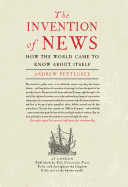
| Publisher: | Yale University Press | |
| Genre: | Literary Criticism, Books & Reading, Language Arts & Disciplines, History, Social Science, Social History, Journalism, Media Studies | |
| ISBN: | 9780300179088 | |
| Pub Date: | March 2014 | |
| Price: | $35 |
| History |
by Andrew Pettegree
At a time when digital media is transforming the way news is delivered, Andrew Pettegree offers a reminder that newspapers, too, were once a revolutionary form of delivering information. In The Invention of News: How the World Came to Know About Itself, Pettegree looks at the changing definition, use, control and distribution of the news, from the medieval world to the age of revolution.
Building on his groundbreaking The Book in the Renaissance, Pettegree demonstrates that access to news became increasingly widespread, moving from private networks of information run by medieval elites, through 16th-century pamphlets and news singers, to the newspapers of the 18th century. He looks at the development of postal systems, private couriers and the printing press. He considers the importance of the introduction of paper, the rise of coffee shops and the growth of a literate middle class. He discusses the roles played by news pamphlets in the Reformation and by newspapers in the American and French Revolutions.
Some of the most interesting sections of The Invention of News deal not with the development of new media, but the creation of new audiences. Technology often outpaced demand. Early printers, finding the traditional market for large books would not keep them solvent, created new markets for more ephemeral products. The first newspapers were bewildering to audiences accustomed to news pamphlets that told a single story from beginning to end. Perhaps, at some level, the medium is the message. --Pamela Toler, blogging at History in the Margins
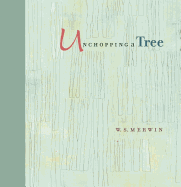
| Publisher: | Trinity University Press | |
| Genre: | General, Trees, American, Environmental Conservation & Protection, Essays, Plants, Poetry, Nature | |
| ISBN: | 9781595341877 | |
| Pub Date: | February 2014 | |
| Price: | $14.95 |
| Essays & Criticism |
by W.S. Merwin, illust. by Liz Ward
W.S. Merwin, the Pulitzer-winning former U.S. poet laureate, captures the essence of treeness in the delightful and insightful Unchopping a Tree. As he writes, "Even in the best of circumstances it is a labor that will make you wish often that you had won the favor of the universe of ants, the empire of mice or at least a local tribe of squirrels, and could enlist their labors and their talents. But no, they leave you to it. They have learned, with time. This is men's work."
From the delicate process of sorting out fallen leaves and tiny twigs, to the chips and sawdust scattered on the ground, to the scaffolding required to steady the broken trunk as the tree is uprighted, Merwin's words linger, causing the reader to pause and reflect on the majesty embedded in a tree and the nature that surrounds it. As Merwin suggests, although one might be able to reconstruct the tree, down to the tiny bits of moss that grow on its limbs and the spider webs woven in its branches, "it does not set the sap flowing again." This perspective embraces the spiritual qualities of nature, provoking a more thorough examination of humanity's rampant destruction of the environment. Lyrical drawings of the cellular structure of a tree by Liz Ward complement and enhance the humble beauty of Merwin's descriptions. --Lee E. Cart, freelance writer and book reviewer
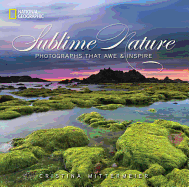
| Publisher: | National Geographic Society | |
| Genre: | Collections, Catalogs, Exhibitions, Inspiration & Personal Growth, Body, Mind & Spirit, General, Plants & Animals, Subjects & Themes, Photography, Nature | |
| ISBN: | 9781426213014 | |
| Pub Date: | March 2014 | |
| Price: | $35 |
| Art & Photography |
by Cristina Mittermeier
Sublime Nature is the first volume in a National Geographic Society series of books that confirm a commitment to "the conservation of our extraordinary planet's natural resources." Cristina Mittermeier, a marine biologist turned photographer, has assembled a collection of stunning images from an array of wildlife and environmental photographers who capture the beauty of nature in a way she hopes will "awaken broad-based social consciousness."
The book is divided into four sections: Awe, Grace, Joy and Peace. Each begins with a brief, poetic personal introduction by Mittermeier. Along the way, inspirational quotes from renowned writers, naturalists, scientists and artists serve the four themes. The accompanying scenic images range from a dramatic shot of penguins atop Antarctic icebergs to striking photos of waves of sand on arid Moroccan dunes, from a fisherman casting his line into a coral inlet in Indonesia to a graceful ballet of bottlenose dolphins in Peru and dusky gloom trapped amid rocky chambers in Arizona.
Mittermeier is committed and passionate in her belief that photography can influence the fate of nature. The images she has selected are lively and thought provoking--brilliant compositions bursting with vivid color and light. The impact of the photographs paired with profound words is bound to encourage others to find meaning, appreciation and a greater respect for a planet facing continued wildlife extinction, climate change and diminishing natural resources. --Kathleen Gerard, blogger at Reading Between the Lines
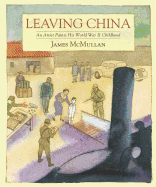
| Publisher: | Algonquin | |
| Genre: | Juvenile Nonfiction, Military & Wars, Art, History, Biography & Autobiography, Social Issues, Emigration & Immigration, Asia | |
| ISBN: | 9781616202552 | |
| Pub Date: | March 2014 | |
| Price: | $19.95 |
| Starred | Children's & Young Adult |
by James McMullan
The voice that threads together these moving snapshots of a boy's life, from age two to 11, emanates from an author and artist who has pieced together a memoir that deepens with each rereading. Jim McMullan (I Stink!; I'm Dirty!, both written by his wife, Kate McMullan) places each vignette into a mosaic of a family torn apart by war.
With a father and husband in the military during World War II, young Jimmie and his mother must make up the rules as they go along. But that was also true for Jimmie's grandparents, who arrived in Cheefoo in Northern China in 1888 as missionaries. McMullan makes visual and lyrical connections throughout the book, linking the images in surprising and wonderful ways. Luminous watercolors, so lightly applied that they seem lit from within, capture the milestone moments of McMullan's childhood: fleeing China due to the Japanese occupation, entering boarding school, the airless living room in which Jimmie overhears a conversation between his mother and a lover, and a quiet epiphany when he happens upon an artist painting a canvas in the woods, a "simple process that seemed strangely magical." The landscapes transport readers to foreign lands and convey young Jimmie's sense of the ground shifting beneath him with each transition, dictated by his father's wartime service and his mother's rudderless steering.
Each watercolor and its accompanying meaty text carry readers along on McMullan's journey. We watch an artist in the making, shaped by the strange, wonder-filled and sometimes terrifying experiences he's felt and seen. --Jennifer M. Brown, children's editor, Shelf Awareness
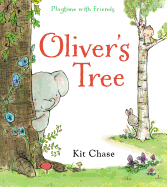
| Publisher: | Putnam | |
| Genre: | Animals, General, Imagination & Play, Juvenile Fiction, Nature & the Natural World, Elephants | |
| ISBN: | 9780399257001 | |
| Pub Date: | March 2014 | |
| Price: | $16.99 |
| Children's & Young Adult |
by Kit Chase
This charming tale of friendship will have children and parents eager for more from first-time author and artist Kit Chase.
Oliver the elephant, Lulu the bird and Charlie the rabbit love to play outside. But when they play hide and seek and Oliver is "it," he can't reach the branch where Lulu hides. He pronounces, "Trees are out of bounds." But Charlie points out, "Not all trees are the same.... We'll find a tree you can play in, too." That turns out to be more challenging than Charlie realized. One tree's too small, another too tall, and another "was just right. Until... Crash!" The author-artist uses the page turn to build suspense, and the expressions on her characters' faces register disappointment and alarm. "Elephants just don't belong in trees!" Oliver says, as the pachyderm pouts and marches off. Exhausted after a long walk, Oliver falls asleep; even youngest children will recognize his napping spot as a sequoia-size tree trunk. When Lulu and Charlie discover their pal napping, they hatch a plan to cheer him up.
This gentle tale stars cherubic animal characters that resemble preschoolers and model kindness and inclusion. Rather than rule out a hiding place that's fun for some and excludes a few, these friends find a way to include everyone. --Jennifer M. Brown, children's editor, Shelf Awareness
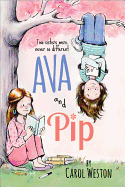
| Publisher: | Sourcebooks | |
| Genre: | General, Social Issues, Juvenile Fiction, Family, Siblings | |
| ISBN: | 9781402288708 | |
| Pub Date: | March 2014 | |
| Price: | $15.99 |
| Children's & Young Adult |
by Carol Weston
Carol Weston's (The Diary of Melanie Martin) tale of two siblings offers some twists: the younger sister feels that her parents favor the older sister and, as a budding writer, gregarious Ava breaks the stereotype of reclusive author.
The story unfolds through fifth-grader Ava's journal entries, often signed humorously, such as "Ava, Average" (after she loses the special pen her father the playwright gave her) or "Ava the Ambivalent" (under an entry asking, "Question: Do I even want to be a real writer?"). Wordplay reigns in the family, particularly palindromes. As seventh-grader Pip dominates their parents' attention, Ava tries harder to come up with clever palindromes, and no one notices. When a new girl, Bea, schedules the first boy-girl party on the same night as the sleepover Pip has planned for her 13th birthday, Pip's peers start bailing. Ava fights back with an entry for a writing contest called "Sting of the Queen Bee." Bea, a writer herself, discovers Ava's story, and as they sort things out, Ava discovers Bea is not the villain of her story, but rather a kindred spirit with a similarly shy sibling. The two hatch a plan to help Pip get over her social handicap--and Bea helps Ava with her parents.
Weston discusses challenges for aspiring writers--such as writers block, a dearth of ideas and the fear that can arise with the threat of the subject of your writing discovering what you've written. Weston deals with family dynamics and creative challenges in realistic, emotionally honest ways. --Jennifer M. Brown, children's editor, Shelf Awareness